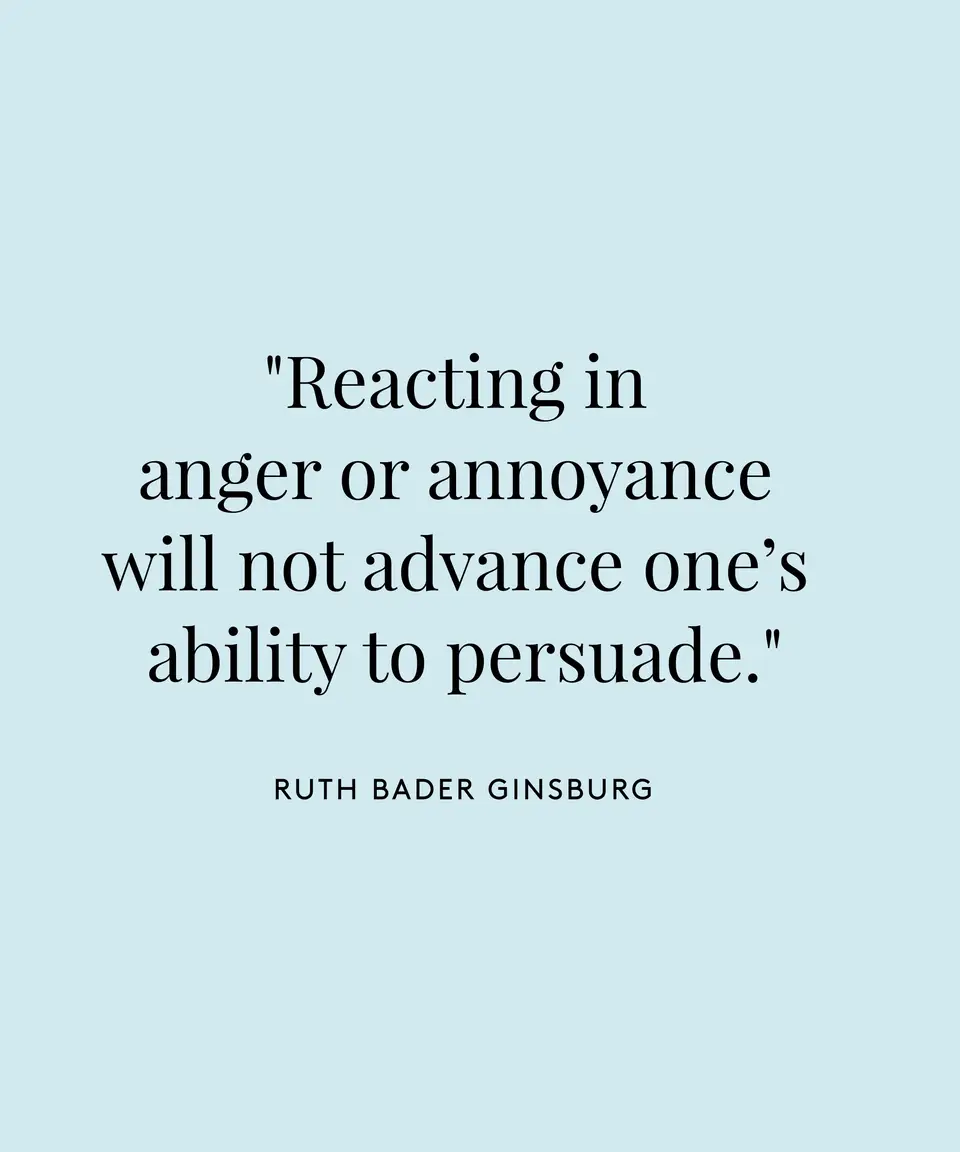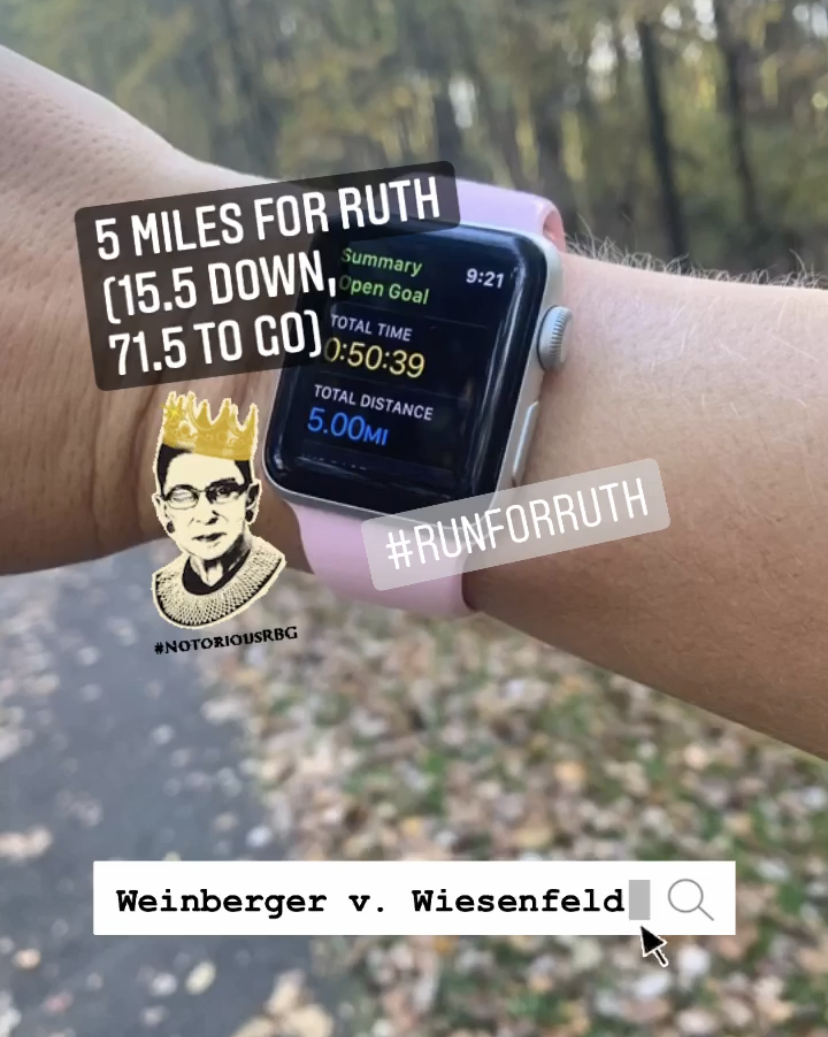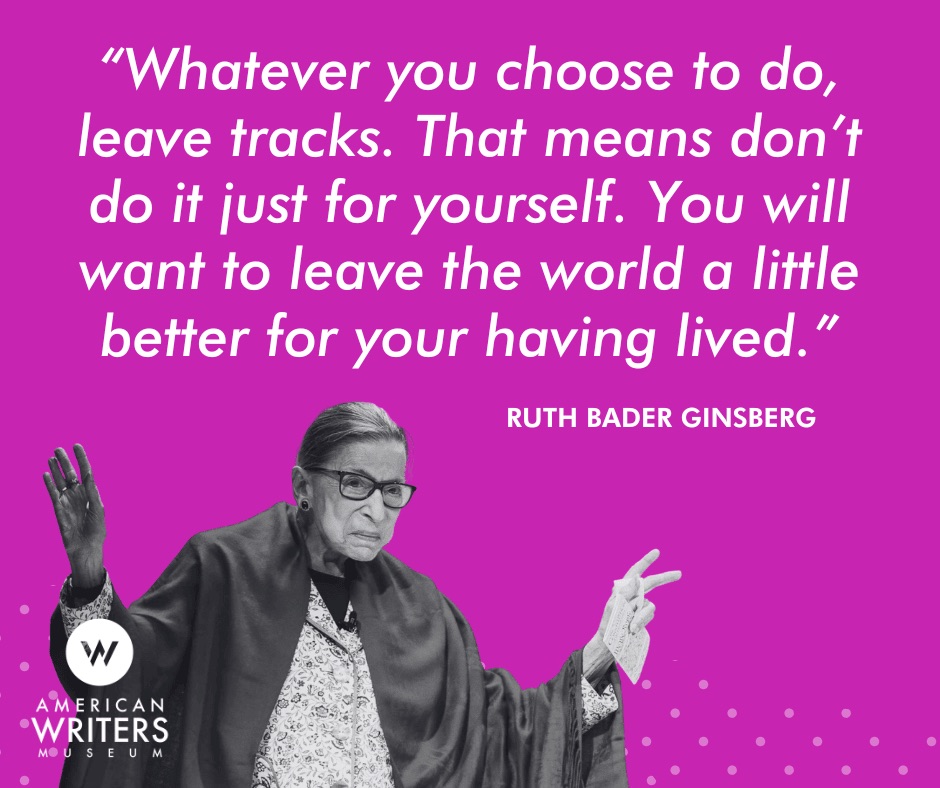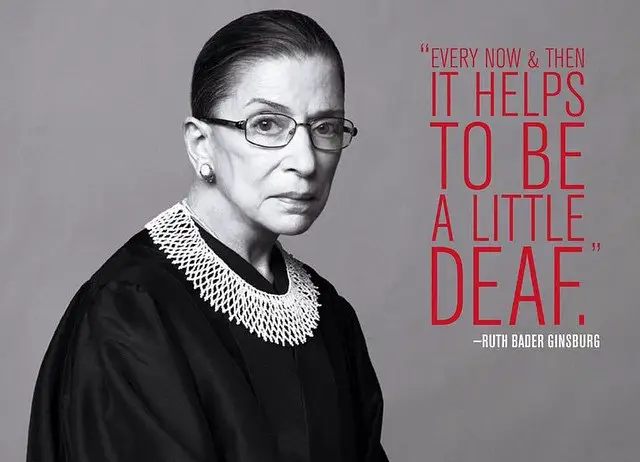This is the second in a 2-part series. Read Part I here.
Ruth Bader Ginsburg may be remembered as a pioneer for women’s rights, but it was her strategy of representing men in equal protection cases through the 1970’s that set the foundation for this long-term progress.
Experientially, Ginsburg – who graduated at the top of her class from Harvard – had a hard time securing a job as she transitioned out of Law School and into the workforce. Having been demoted several years earlier after telling an employer she was pregnant, she said she was discriminated against for being “A, a woman, B, a mother, and C, Jewish.” (NPR)
 She was keenly aware and frustrated by the obstacles faced by ambitious women by the time she settled for a law professor job at Rutgers University in 1963. It was her students who encouraged her to lead a seminar on women and the law several years later, which would lead to her writing briefs and arguing landmark cases for gender inequality as a volunteer with the American Civil Liberties Union (ACLU).
She was keenly aware and frustrated by the obstacles faced by ambitious women by the time she settled for a law professor job at Rutgers University in 1963. It was her students who encouraged her to lead a seminar on women and the law several years later, which would lead to her writing briefs and arguing landmark cases for gender inequality as a volunteer with the American Civil Liberties Union (ACLU).
During the Women’s Liberation Movement of the 1970’s, while feminists made waves through overt protest and sit-ins, Ruth would dismantle inequality one case at a time in court. She would use her education and platform to discuss the realities of gender-based discrimination before the all-male judges, and circle the points back to the case at hand; how these fallacies within the law were adversely affecting her male plaintiff.
“I did see myself as kind of a kindergarten teacher in those days, because the judges didn’t think sex-discrimination existed,” she would later say in a 2018 interview.
Meanwhile, on my #RunforRuth…
I was in pain when I signed up for #RunforRuth. My old IT Band Syndrome (ITBS) was bothering me quite a bit – this is an overuse injury which causes pain on the outside of the knee.
Because I had experienced this a couple times before, I knew it was a form issue and nothing serious. I had a few fixes I could try, but I was very much in my head about my body before I started. With a little research and very intentional form correction, I gingerly set out for my first #RunforRuth on October 15th. I logged 4.5 miles pain-free that day.
It was such a small victory, but felt like a nod in so many ways to Ruth’s ability to assess reality and create small wins toward a greater end. Had I ignored the problem and changed nothing – I could have really hurt myself.
Likewise, Ruth knew a Kindergarten education in discrimination for the regal and brilliant male judges she was dealing with was not a detail to be overlooked. She used male examples with the understanding it would help them identify better. She did this repeatedly, creating tiny incremental changes which would add up to BIG change over time.
Ruth’s Strategy in Action
 Parallel to getting my physical challenges squared away, I was beginning to consider the specific court cases Ruth argued on behalf of male plaintiffs.
Parallel to getting my physical challenges squared away, I was beginning to consider the specific court cases Ruth argued on behalf of male plaintiffs.
The first was put together with her tax lawyer husband Martin Ginsburg in 1972: Moritz v. Commissioner of Internal Revenue. The couple proved in this lawsuit that a caregiver tax deduction that had been denied for Charles Moritz for being an unmarried man caring for his elderly mother was a violation of the Equal Protection Clause in the U.S. Constitution. It was a deduction a woman would have been granted in the exact same situation.
In Weinberger v. Weisenfeld, Ruth argued on behalf of a Stephen Weisenfeld, who lost his wife – the principal earner of the family – during the birth of their baby son. The law at the time had allowed social security survivor benefits to women who lost their husbands under similar circumstances, but not to husbands who lost their wives.
In Frontiero v. Richardson, Ruth argued as an impartial ACLU advisor on behalf of a married couple for equal housing, medical and dental benefits from the Air Force. The enlisted Lieutenant Sharon Frontiero – the wife – couldn’t get the same military benefits the couple could have gotten if her husband were enlisted at the very same rank.
In the latter two cases, Ruth was able to illustrate how sex-based distinctions negatively impacted entire families.

While the Women’s Liberation activists chanted for sweeping change in the streets, Ruth attacked the concerns of the Movement with tactical intelligence. She brought them before the third branch of our government, making them issues of justice and not just politics.
As I pounded the pavement and processed these tiny increments of enlightenment RBG meticulously injected into our highest court, it occurred to me that we would not be where we are today without her artistic sense of detail for the law.
I thought about the calls for sweeping change in America’s streets this very summer – in 2020. Demands for re-allocating police funding, and the frustration over progress that has happened far too slowly.
I thought about the fear and misunderstanding incited with people who have always been protected by the presence of law enforcement – the missing link being this Kindergarten education to prove the existence of discrimination with people who simply can’t see it.
While I always respect the drum of the streets, it occurred to me that this is where the law-level changes must happen. In court, by people not just Harvard-law educated, but keenly attuned to the everyday struggles in question.
This is why diversity in education is important, as it filters year-by-year into the growth of allies in the places we need them most. This is why Ruth herself said, “women belong in all places decisions are being made.”
Likewise, Americans of every diverse representation belong in all places decisions are being made.
Outraged and Loud vs. Focused and Strategic
My body and Ruth’s tenacity proved to me along this journey that there is always a way when you are determined and strategic. Both proved to me that small change is still change.
There is a time for standing on the street with your sign and outrage. This noise attracts necessary public attention and allyship, but the deal is only ever closed by the steady hand and researched strategy of the Ruth Bader Ginsburgs. One inch at a time, face-to-face with the folks in power, and with give and take and faith that whatever can’t be won this time will find its day in the next strategic opportunity. An opportunity that may not come until we are long gone, but one that we can make room for with whatever incremental clearing we accomplish in this one.
I know this is true, because I saw how strengthening one small muscle near my hips relieved big pain in my knee. I know this small fix at four miles was integral in making the full 87 possible.
Likewise, I realized in this journey back through time the gravity of those tiny amendments RBG won for us decades ago. Each one making room for the next, ultimately leading to invaluable longer-term justice for women across the United States of America.
My favorite promise of this experience, juxtaposed against a year of unprecedented setback, is this: That we don’t start over from scratch each time we fail. We start from experience. ➕


